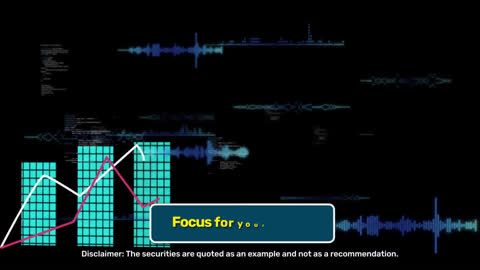Those who invest in the financial market need to be patient, put in the hard work, and grasp the nuances. You must have the right tools at your disposal and thoroughly research and analyse your options. It is almost impossible to predict market movements, and as such, even the smallest of indicators can be vital.
The two widely used metrics while analysing the market are open interest and volume. These two indicators help traders and investors assess the market flow and sentiment relating to futures and options contract trading. Comprehending these two concepts is paramount, as they help traders speculate market movements, price direction, and market liquidity.
What is open interest?
Open interest alludes to the total number of outstanding contracts for a certain financial instrument, such as futures or options, that have not yet been settled. It refers to the total number of positions actively held by traders in the market and is used as a measure of market liquidity and activity. Open interest, similar to other securities, is prone to market movements.
Intuitively, open interest increases when new contracts are opened. This implies that for a specific security, there are a greater number of buyers and sellers. On the flip side, when positions in the current contracts are closed out by buyers and sellers, the open interest decreases. This indicates that the investors are not interested in opening new positions.
Let us look at an example to understand this better.
Example:
- Let us suppose that open interest of the XYZ call option is 0 on the first day.
- Investor ‘A’ purchases 20 XYZ options contracts as a new position on the second day, and the open interest for this specific call option is 20.
- The day after, 15 XYZ contracts were closed, and 20 were opened. This implies that the open interest increased to 25.
Why does open interest matter in trading?
Open interest matters in trading because it serves as a crucial indicator of market liquidity and activity for a security. When open interest increases, it signals the creation of new contracts and an expanding market, indicating a higher number of buyers and sellers. This implies greater liquidity and ease of trading due to the influx of participants and capital. Conversely, declining open interest suggests that market participants are not initiating new positions and are closing existing ones, leading to reduced market activity. In such cases, the market is drying up, making it less ideal for trading opportunities. Traders often use open interest as part of their analysis to gauge the health and attractiveness of a market, helping them make informed decisions about when and where to invest or trade.
What is trading volume?
To understand the difference between open interest and volume, you must also understand the concept of volume trading. Volume records the quantum of options or futures contracts swapped between buyers and sellers on any given trading day. It's quantified down to individual transactions, encompassing all the futures and options contracts traded between buyers and sellers for that specific security.
Thus, each and every transaction is considered for calculating the daily volume. It helps traders assess the market activity, liquidity, and potential trends of a particular security. Higher volume often indicates a strong market interest and potential price movements. However, a security that isn’t being actively traded indicates low trading volume. These figures are tracked by the market exchange and are updated constantly, with the final daily trading volume computed towards the end of the trading day.
Let us consider the following example.
Example:
- Let us suppose the volume in call option ‘XYZ’ with a strike price of Rs. 60 and an expiration date of around 2 weeks did not trade any contracts in the first session. In such a scenario, the trading volume is 0.
- In the second session, if an investor ‘A’ buys 10 call option contracts and no other trade occurs during the day, the trading volume will be 10.
We’ve understood the meanings of open interest and volume. Let us now take a look at their differences.
Additional read: What is Intraday Options Trading
Why does volume matter in trading?
Volume is a crucial factor in trading because it serves as a direct indicator of a security's market activity and liquidity. High trading volumes signal active interest in a security, indicating opportunities for more efficient order execution. Traders often focus on a security's average daily trading volume to gauge market dynamics. For example, when a security experiences higher-than-usual trading volume alongside a price change, it can suggest a favorable opportunity. Thus, trading volume helps validate the significance of price movements and direction. It provides traders with valuable insights into the strength and sustainability of market trends and aids in making informed decisions about when to buy or sell a security.
Open interest vs. volume
Before we compare and contrast the two metrics, it is essential to remember that they are important in distinct ways. Open interest and volume are important indicators of market activity and liquidity.
- Open interest represents the quantum of futures and options contracts that are unsettled or active for an asset at any point in time. Meanwhile, volume pertains to particular securities traded within a specified timeframe.
- Let us consider an example. Trader ‘A’ holds 15 option contracts and sells them to trader ‘B’, who just entered the market. Here, there is no change in the open interest as the positions were transferred and not opened or closed. However, trading volume increased by 15 because of this transfer.
- Open interest is extremely volatile and is subject to increases and decreases. It paints a comprehensive picture of the interest in a specific security. On the other hand, volume quantifies the trade for a particular period and certain security.
- Another significant difference between open interest and volume pertains to the frequency with which the data is updated. As previously mentioned, the aggregate volume is tracked and computed by the market exchange towards the end of every trading day. However, open interest values are not updated frequently.
Conclusion
Open interest and volume are essential metrics that can influence and impact the decision-making process of traders. Coming to the open interest vs. volume comparison, they are different yet important. They help traders identify opportunities by gauging market activity, liquidity, and sentiment, along with potential entry and exit points.




